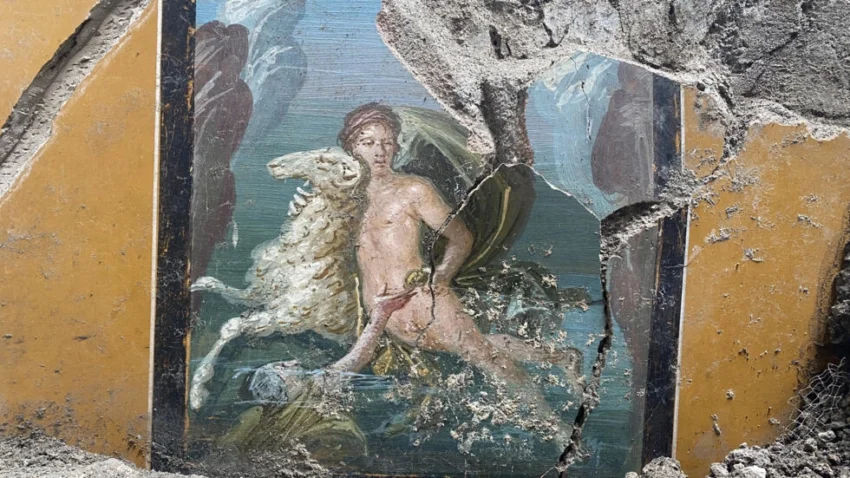Archaeologists have made a remarkable discovery in the ancient Roman city of Pompeii. They uncovered a fresco depicting the Greek mythological siblings Phrixus and Helle.
Gabriel Zuchtriegel, director of the Pompeii Archaeological Park, described the find as “a poignant reflection of history unfolding once again.”
“History has repeated itself,” Zuchtriegel said, giving an update on the excavation and restoration work. “A beautiful fresco in an excellent state of preservation.”
The legend of Phrixus and Helle is widespread and still current in Pompeii. Athamas, king of the city of Orkhomenos, was married to the divine being Nephele. They had two children: Phriksos (boy) and Helle (girl). Athamas separated from Nephele and married Ino, one of the daughters of Kadmos, the founder of Thebai. Ino, who gave birth to two sons, devised a plot to eliminate her stepson Phrixus, the future holder of the throne. She sent orders to the housewives to roast the wheat seeds. The women roasted the seeds without the men knowing. Because of the lifeless seeds, the land did not produce its annual crop. Ino bribed the scholars whom Athamas was to consult on how to get rid of the famine and got her husband to receive a false prophecy.
Athamas had to sacrifice his son Phriksos to Zeus in order to end the famine. Wanting to escape the famine and under pressure from the people, Athamas was forced to take his son Phriksos to the altar of sacrifice. But Nephele, in order to save her son from being sacrificed, helped them escape with her daughter Helle, and sent them a golden skinned ram she had received from Hermes. The ram carried the children through the sky. When they came over the strait connecting the Aegean to the Marmara Sea, Helle fell and drowned (Dardanelles).
The fresco showcases vibrant colors and exquisite artistry; Helle is depicted on the verge of drowning, her face obscured by the waves as she reaches for her brother.
Zuchtriegel expressed optimism that these meticulously preserved houses will be made available to the public in the near future, emphasizing the cultural and historical significance of this latest discovery.
The ancient city of Pompeii was destroyed in 79 AD by an explosion that killed more than 2000 people. The ruins have become one of the most visited archaeological sites in the world.
Attracting around 4 million visitors a year, the city has come a long way since 2013, when Unesco threatened to put it on the world heritage list if Italian authorities did not improve protection.
Among the surprises unearthed in recent months are 13 Nativity style statuettes that offer evidence of pagan ritual traditions in the ancient Roman city, and last June a striking still life fresco that looks like a pizza, with an element that looks suspiciously like a pineapple.
Cover Photo: Parco Archeologico di Pompei
